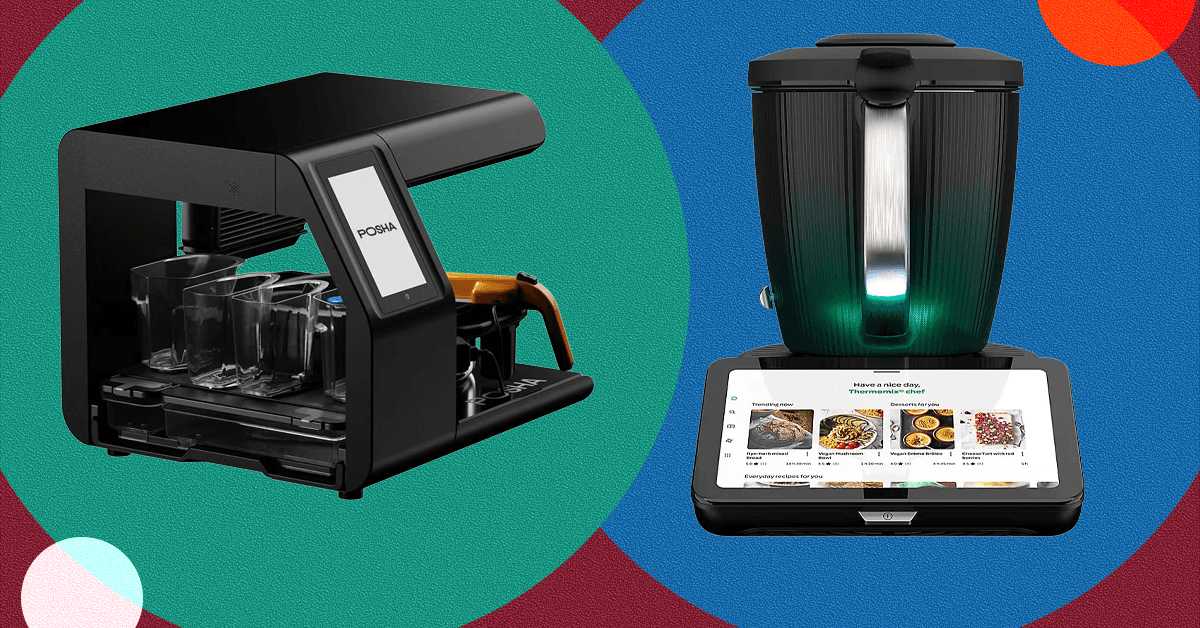Tech
People trust podcasts more than social media. But is the trust warranted?

There’s been a striking decline in public confidence in social media platforms, according to the 2025 Ethics Index published by the Governance Institute of Australia. One in four Australians now rate social media as “very unethical.”
This is consistent with other reports on Australian attitudes toward social media. For example, the Digital News Report 2025 similarly identified widespread concern about misinformation and distrust in news shared on social media.
And such distrust isn’t limited to Australia. The sentiment is evident worldwide. The 2025 Edelman Trust Barometer, based on an annual global survey of more than 30,000 people across 28 countries, reports a decline in trust in social media companies.
So where does this negativity come from? And are other ways of consuming information online, such as podcasts, any better? Podcasts are booming in Australia and around the world, and are often perceived much more positively than social media.
Let’s look at what the evidence says about the impacts of social media, what it does and doesn’t yet tell us about podcasts, and what this reveals about the need for accountability across digital platforms.
Where does this distrust stem from?
While social media has enabled connection, creativity and civic participation, research also highlights its downsides.
Studies have shown that, on certain social media platforms, false and sensational information can often spread faster than truth. Such information can also fuel negativity and political polarization.
Beyond civic harms, heavy social media use has also been linked to mental health challenges. The causes are difficult to establish, but studies report associations between social media use and higher levels of depression, anxiety and psychological distress, particularly among adolescents and young adults.
In 2021, Frances Haugen, a former Facebook product manager, made public thousands of internal documents that revealed Instagram’s negative impact on teen mental health. The revelations triggered global scrutiny and intensified debate about social media accountability.
Whistleblowers such as Haugen suggest social media companies are aware of potential harms, but don’t always act.
Podcasts have a much better reputation
In contrast to social media, podcasts appear to enjoy a very different reputation. Not only do Australians view them far more positively, but podcast consumption has significantly increased over the years.
More than half of Australians over the age of ten engage with audio or video podcasts on a monthly basis. It’s not surprising that the 2025 Australian election saw political leaders feature on podcasts as part of their campaign strategy.
Why are podcasts so popular and trusted? Several features may help explain this.
Consumption is often more deliberate. Listeners choose specific shows and episodes instead of scrolling through endless feeds. Podcasts typically provide longer and more nuanced discussions compared with the short snippets served by social media algorithms.
Given these features, research suggests podcasts foster a sense of intimacy and authenticity. Listeners develop ongoing “relationships” with hosts and view them as credible, authentic and trustworthy.
Yet this trust can be misplaced. A Brookings Institution study analyzing more than 36,000 political podcast episodes found nearly 70% contained at least one unverified or false claim. Research also shows political podcasts often rely on toxic or hostile language.
This shows that podcasts, while often perceived as more “ethical” than social media, are not automatically safer or more trustworthy spaces.
Rethinking trust in a complex media environment
What’s clear is that we shouldn’t blindly trust or dismiss any online platform, whether it’s a social media feed or a podcast. We must think critically about all the information we encounter.
We all need better tools to navigate a complex media environment. Digital literacy efforts must expand beyond social media to help people assess any information, from a TikTok clip to a long-form podcast episode.
To regain public trust, social media platforms will have to behave more ethically. They should be transparent about advertising, sponsorships and moderation policies, and should make clear how content is recommended.
This expectation should also apply to podcasts, streaming services and other digital media, which can all be misused by people who want to mislead or harm others.
Governments can reinforce accountability through fair oversight, but rules will only work if they are paired with platforms acting responsibly.
Earlier this year, the Australian government released a report that argued social media platforms have a “duty of care” toward their users. They should proactively limit the spread of harmful content, for example.
A healthier information environment depends on skeptical but engaged citizens, stronger ethical standards across platforms, and systems of accountability that reward transparency and reliability.
The lesson is straightforward: trust or distrust alone doesn’t change whether the information you receive is actually truthful—particularly in an online environment where anyone can say anything. It’s best to keep that in mind.
This article is republished from The Conversation under a Creative Commons license. Read the original article.![]()
Citation:
People trust podcasts more than social media. But is the trust warranted? (2025, October 7)
retrieved 7 October 2025
from https://techxplore.com/news/2025-10-people-podcasts-social-media-warranted.html
This document is subject to copyright. Apart from any fair dealing for the purpose of private study or research, no
part may be reproduced without the written permission. The content is provided for information purposes only.
Tech
These Beats Headphones Are Marked Down to $150 for Black Friday

Say what you will about Beats fans, but at least they know what they like. These headsets and earbuds are instantly recognizable for their slick styling and bass forward sound profile. If that sounds like your speed, the Beats Studio Pro are currently marked down as low as $150 Amazon, depending on your color preference. I spotted them at the lower price in matte white, sand gray, and dune, with a slightly higher $170 price tag for the remaining colors, though your availability may vary.
While the Studio Pro lack some of the Apple-exclusive features you get with AirPods, for example, the upside is that they’re much more friendly with Android devices. Both platforms get access to one-touch pairing and the helpful Beats app, while iPhone owners also get the benefits of Hey Siri and Find My Device. The other features are a bit of a mixed bag, with a decent battery life of up to 24 hours with ANC on, or 40 with ANC off, but no auto pause when you take them off, or multi-point pairing beyond Google’s Chromebook and Android option.
Like most headphones from Beats, the sound profile is decidedly bass-forward, but Apple’s ownership has tempered that tendency over the last few years. As a result, this generation is more balanced than previous eras, with our reviewer Ryan Waniata complimenting the expansive sound stage and sharp details. Unfortunately, most Beats headsets don’t have any equalizer, and the Studio Pro are no different. For better or worse, you’re stuck with how they sound coming out of the box. These at least support high-resolution audio, up to 24-bit/48-kHz, but only in the wired USB-C mode.
For the Beats enthusiast looking for an upgrade or a second headset for the gym, these are a solid option at a deeply discounted price. They lack some of the richer and more advanced features found on more expensive headsets, but that may be the right compromise for some folks who just want something simple that works every time. If you’re not sure you can stand the bass, make sure to check out all of our favorite wireless headsets.
Tech
Google’s Black Friday Deals Are Live for Pixel Phones, Nest Hardware, and More
Google Pixel deals abound! The company has kicked off its Black Friday promotions on all of its Pixel hardware, from the value-friendly Pixel 9a to the flagship Pixel 10 Pro XL. There are even discounts on the brand-new Pixel Watch 4 and Google’s wireless earbuds. We’ve rounded up the best Google Pixel discounts this shopping holiday, and even included a handful of deals on Nest hardware if you’re inclined to Google-ify your home.
Check out our Best Early Black Friday Deals for more great deals on WIRED-tested gear.
Featured in this article
Google Pixel Phone Deals
Read our Best Google Pixel Phones guide for more details on these products.
Our top smartphone recommendation for most people, the Google Pixel 9a (9/10, WIRED Recommends) is a steal at $399. You get all the accouterments you’d want in a phone, from wireless charging and a reliable dual-camera system to solid day-long battery life and excellent performance for the money. Google also promises 7 years of software support, which is unmatched at this price, and there’s plenty of fresh software smarts that you’ll find useful every day, like Call Screening, which will cut down the number of spam calls you get.
A much better value than its predecessor, the Pixel 10 (8/10, WIRED Recommends) is one of the few smartphones at its MSRP with a triple-camera system that includes a 5X optical zoom camera. 5X! You can zoom in and capture your kid on stage at the school holiday concert in pristine quality. That makes it an even better buy at $599. Performance is a step up from the Pixel 9a, as is the selfie camera, and there are a few new exclusive software features—like the ability to AirDrop with iPhone owners. It’s the first Pixel (and flagship Android phone for that matter) with Qi2 magnets for faster wireless charging and access to the MagSafe accessory ecosystem.
If you want Google’s best hardware, look no further than the Pixel 10 Pro or Pixel 10 Pro XL (8/10, WIRED Recommends)—the only differences between the two are screen size and battery life. Scratch that, the XL also supports the Qi2 25-watt standard, allowing it to charge even faster from a compatible Qi2 wireless charger. Outside of that, performance goes up a notch from the base Pixel 10 because of the vapor chamber cooling system, which means demanding games will run a little better. The camera quality is sharper , especially the 5X telephoto and primary camera, and you can use Google’s Video Boost technology for better quality video clips. This is the best Google has to offer right now.
Want a folding phone? Google’s Pixel 10 Pro Fold (7/10, WIRED Recommends) is rated to withstand 10 years of folding and is one of the few folding phones with an IP68 dust- and water-resistance rating. (Just, maybe don’t bend it like this.) I can say that I have dropped this phone multiple times on asphalt, and it only has a few scratches on the frame. I think Samsung did a better job with the Galaxy Z Fold7 this year—it’s much thinner and lighter—but the Pixel 10 Pro Fold is still a solid handset if you prefer Google’s software smarts. The cameras are similar to what you’ll find in the Pixel 10, but you don’t get the same great image quality as the Pixel 10 Pro, despite “Pro” in the name.
You don’t always need the latest and greatest. Google has discounted last year’s Pixel 9 series (9/10, WIRED Recommends), though only some of these are worth the money. For example, the Pixel 9 Pro Fold is only $150 less than the Pixel 10 Pro Fold; buy the latter instead. The best deal here is the Pixel 9 at $499, which will still offer a slightly nicer experience over the Pixel 9a, though if you can spare an extra $100, you should opt for the Pixel 10.
Deals on Pixel Cases and Accessories
Check out our Pixel 10 Cases and Pixel 9 Cases guides for more recommendations.
Tech
Two Kitchen Robots Turned Me Into Their Prep Cook for Thanksgiving

The holiday is still almost a week away, and I’m sick of Thanksgiving. I’ve already made four rounds of mashed potatoes, three of mac and cheese, and three turkeys (with more still waiting in my fridge) as part of testing smart probes to help smoke turkeys outside and preparing seven-course holiday meal kits for friends and family.
I was eager to finally outsource some of the cooking by testing two very different robo-chef devices, the Thermomix TM7 and the Posha kitchen robot. Both promise to plan my meals and also do most of the cooking, which sounds pretty good to me.
The Thermomix descends from a German device launched in 1968—a time when the best-known robot chef was cartoon Rosie on The Jetsons—that was essentially a blender with a heater. It’s since caught on big in countries from Italy to Portugal to Australia, and over the years it’s added multi-tier steaming, baking, proofing, a touchscreen, an encyclopedic recipe app, and a whole lot of smart features. WIRED reviewer Joe Ray called 2020’s last-generation Thermomix TM6 (9/10, WIRED Recommends) the “smartest of the smart kitchen.” The newest version, the seventh-generation TM7, was released in August and looks like a giant trophy with a computer screen. It retails for $1,699 and its goal is to replace almost every appliance in your kitchen. It’ll even happily order groceries for you on InstaCart.
The newest robo-chef entrant is Posha, a Silicon Valley-via-Bangalore startup device that aims at truly autonomous one-pot cooking, once you’ve chopped up the proper ingredients into little bins. The Posha kitchen robot was released in January at a price of $1,750 and promptly sold out, as has each successive batch. The device comes complete with a robot stirring arm, and a camera to monitor moisture and browning. Press a button, and Posha will add ingredients at the appropriate moment, spice and stir your food, add water and oil, and cook it down, all without your participation.
I used both the Posha and Thermomix to make a spread of Thanksgiving sides: candied yams, mashed potatoes, mac and cheese, brussels sprouts, and a more complex wild card entry chosen because I thought my Aunt Katherine might like it—and assessed cooking experience overall. Consider it a robo-chef face-off.
Here is my experience with each of the Thermomix and the Posha—and how each fared on five Thanksgiving side recipes.
Cooking Experience With Thermomix
The Thermomix has almost 60 years of history. This is a good thing. It began as, essentially, a blender that can cook. It is still a very powerful blender that can cook. Lord, it makes pesto or mashed potatoes as quickly and easily as anything. I stood by in actual awe of its raw cooking-blending power.
But it’s also evolved into a whole lot more, an all-in-one device that purports to replace just about every appliance in your kitchen. Today’s Thermomix has become a beast of multifarious functionality.
-

 Tech6 days ago
Tech6 days agoNew carbon capture method uses water and pressure to remove CO₂ from emissions at half current costs
-

 Politics1 week ago
Politics1 week agoBritish-Pakistani honoured for transforming UK halal meat industry
-

 Sports6 days ago
Sports6 days agoTexas A&M officer scolds South Carolina wide receiver after touchdown; department speaks out
-

 Business6 days ago
Business6 days agoThese 9 Common Money Mistakes Are Eating Your Income
-

 Business7 days ago
Business7 days agoWhat’s behind Rachel Reeves’s hokey cokey on income tax rises?
-

 Tech1 week ago
Tech1 week ago$25 Off Exclusive Blue Apron Coupon for November 2025
-

 Sports1 week ago
Sports1 week agoApple scrapping MLS Season Pass service in ’26
-

 Fashion1 week ago
Fashion1 week agoAfter London, Leeds and Newcastle, next stop Glasgow for busy Omnes







































